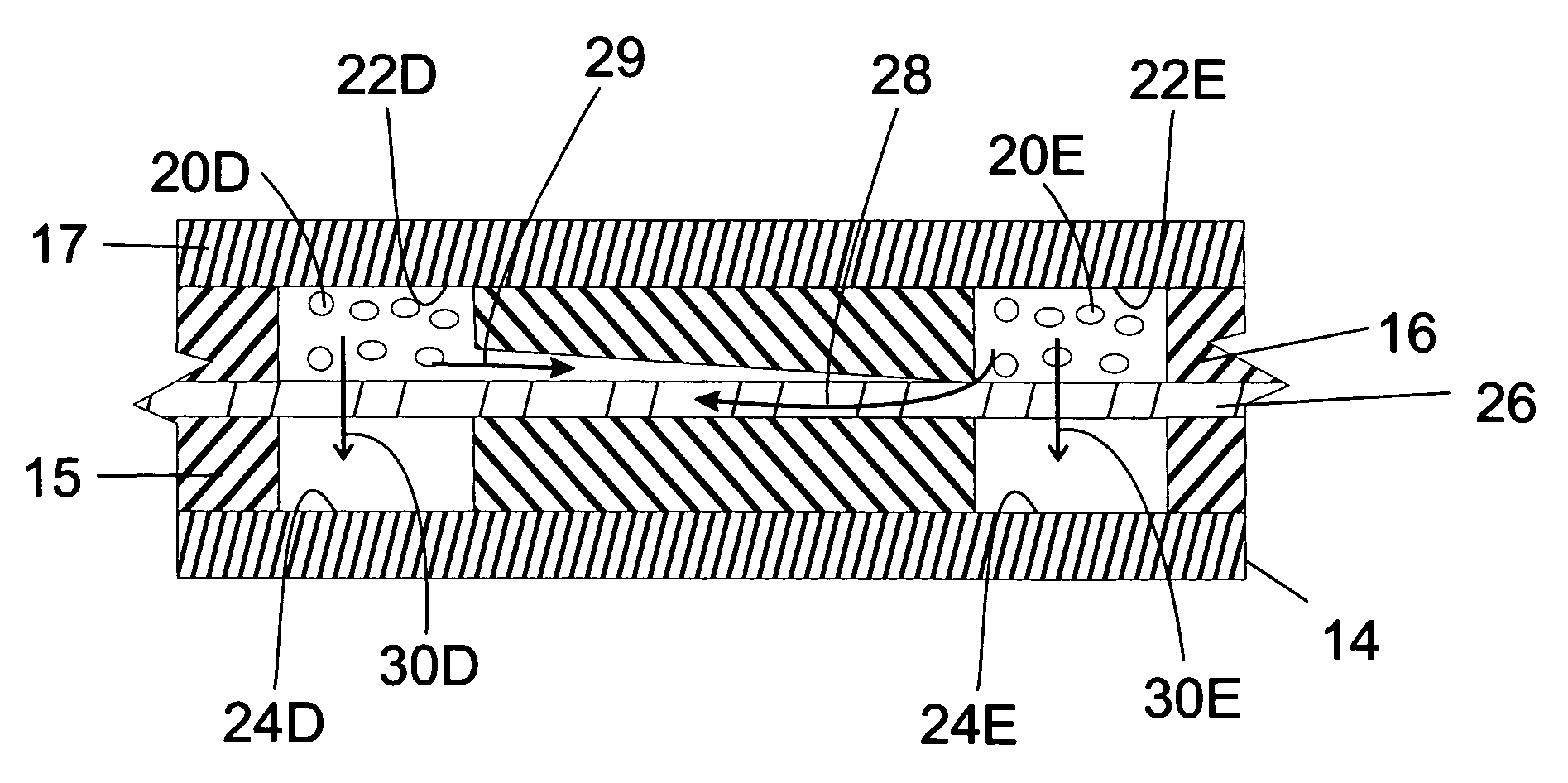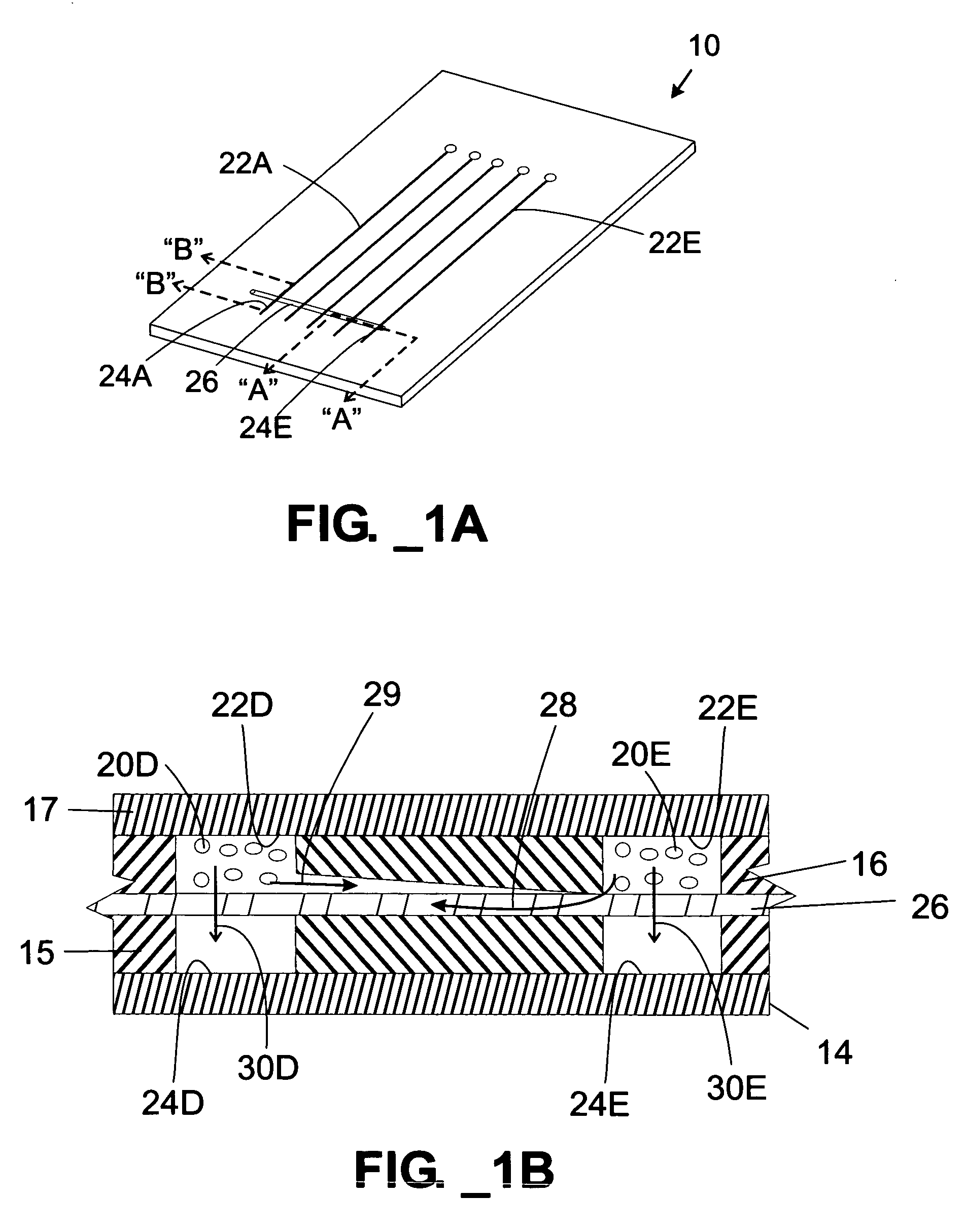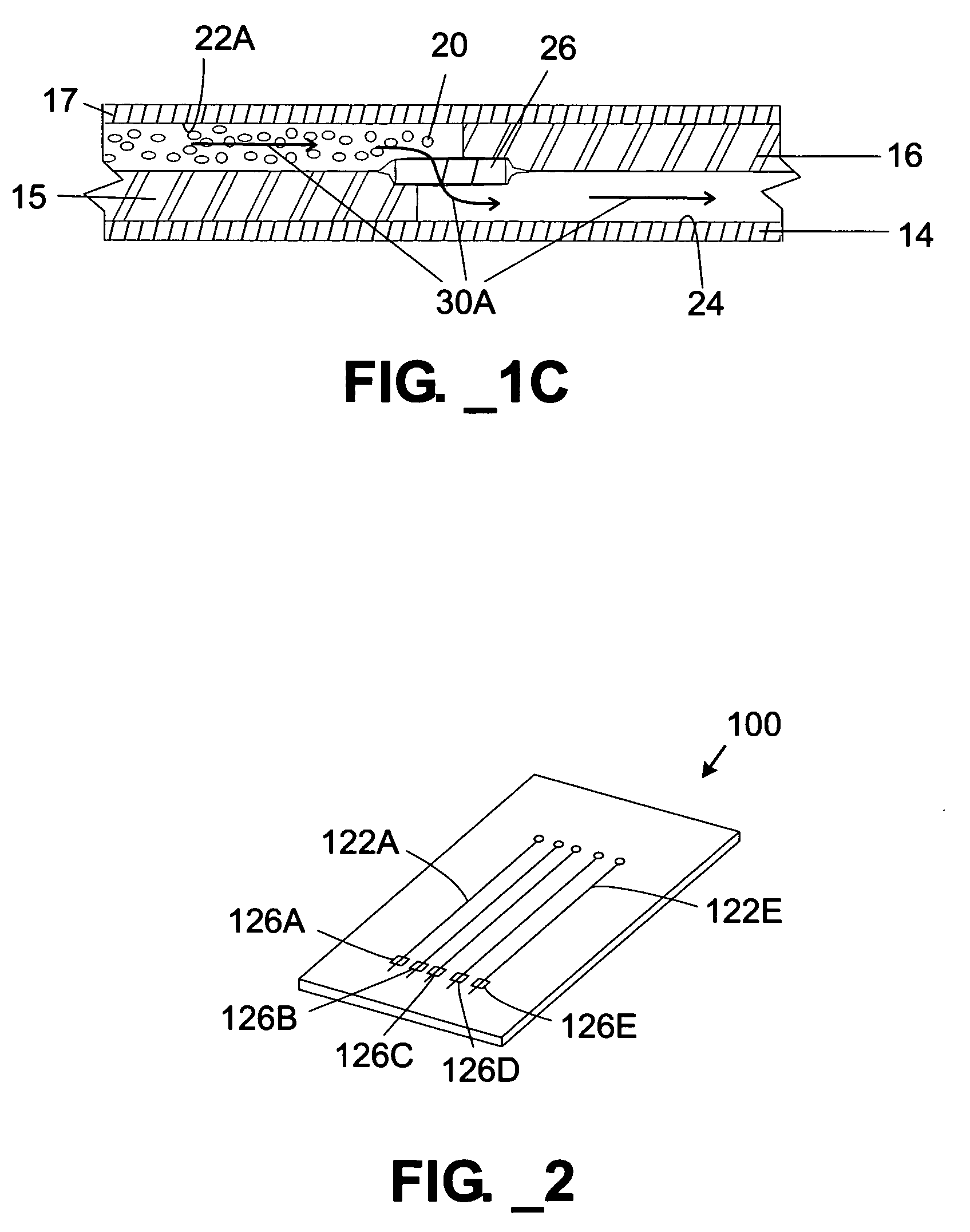Frit material and bonding method for microfluidic separation devices
a technology of microfluidic separation and frit material, which is applied in the direction of positive displacement liquid engine, filter regeneration, ultrafiltration, etc., can solve the problems of difficult bonding of conventional frit materials to the polymer layers of stacked layer devices, the thickness of conventional hplc frit materials cannot be used within laminated multi-layer microfluidic separation devices, and the inability to manufacture microfluidic devices with integral hplc columns
- Summary
- Abstract
- Description
- Claims
- Application Information
AI Technical Summary
Benefits of technology
Problems solved by technology
Method used
Image
Examples
Embodiment Construction
[0022] Definitions
[0023] The terms “channel” or “chamber” as used herein are to be interpreted in a broad sense. Thus, they are not intended to be restricted to elongated configurations where the transverse or longitudinal dimension greatly exceeds the diameter or cross-sectional dimension. Rather, such terms are meant to comprise cavities or tunnels of any desired shape or configuration through which liquids may be directed. Such a fluid cavity may, for example, comprise a flow-through cell where fluid is to be continually passed or, alternatively, a chamber for holding a specified, discrete ratio of fluid for a specified ratio of time. “Channels” and “chambers” may be filled or may contain internal structures comprising, for example, valves, filters, and similar or equivalent components and materials.
[0024] The term ‘rit’ as used herein refers to a microporous material used to retain stationary phase material within a separation column for performing pressure-driven liquid chrom...
PUM
| Property | Measurement | Unit |
|---|---|---|
| operating pressure | aaaaa | aaaaa |
| operating pressure | aaaaa | aaaaa |
| operating pressure | aaaaa | aaaaa |
Abstract
Description
Claims
Application Information
 Login to View More
Login to View More - R&D
- Intellectual Property
- Life Sciences
- Materials
- Tech Scout
- Unparalleled Data Quality
- Higher Quality Content
- 60% Fewer Hallucinations
Browse by: Latest US Patents, China's latest patents, Technical Efficacy Thesaurus, Application Domain, Technology Topic, Popular Technical Reports.
© 2025 PatSnap. All rights reserved.Legal|Privacy policy|Modern Slavery Act Transparency Statement|Sitemap|About US| Contact US: help@patsnap.com



